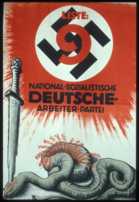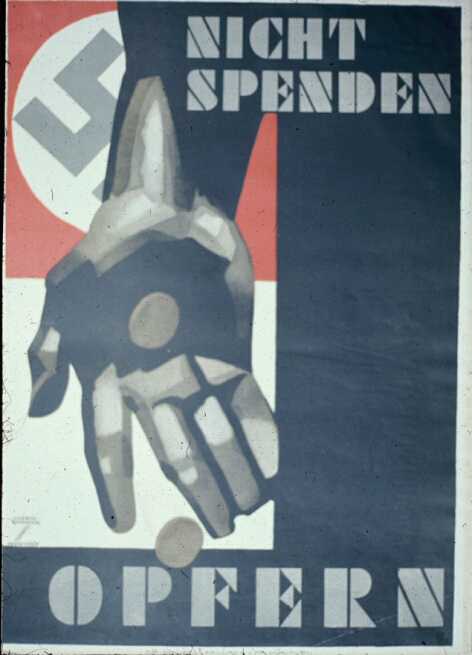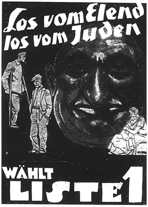Goebbels filtered all information accessible to the German public in films, newspapers, books, radio stations, and artwork. This control of information enabled Goebbels to mobilize Germans, gain public support, and bolster Nazi ideology.
| Joseph Goebbels delivers a speech, circa 1936 |
| Courtesy of Getty Images |
__________________________________________________________________________________________________________
"In relation to the political decontamination of our public life, the government will embark upon a systematic campaign to restore the nation's moral and material health. The whole educational system, theatre, film, literature, the press and broadcasting -- all these will be used as means to this end."
- Adolf Hitler
__________________________________________________________________________________________________________
RADIO STATIONS
"What the press has been in the Nineteenth Century, radio will be for the twentieth century."
- Joseph Goebbels
____________________________
Goebbels valued the effectiveness of radio communication because it could reach large amounts of people almost immediately. He began to control radio stations and created several of his own. He gained control of German stations, placed them under the German National Broadcasting Corporation, and strategically placed loudspeakers in public areas, factories, and schools. This enabled Goebbels to diffuse Nazi broadcasts whenever and to whomever he wanted.
____________________________
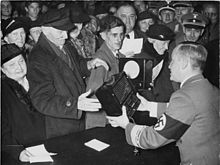
| Free radios were handed out to Germans, 1938 |
| Courtesy of Wikipedia Commons |
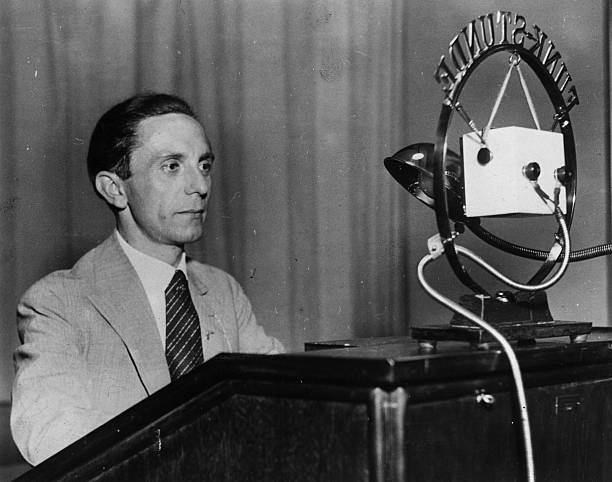
| Goebbels making a broadcast, 939 |
| Courtesy of Fox Photos / Getty Photos |
____________________________
"I consider radio to be the most modern and the most crucial instrument for influencing the masses."
- Joseph Goebbels
____________________________
Goebbels also blocked foreign broadcasts from Germans by deeming it illegal to listen to non-German stations and providing grants to manufacturers to build receivers that couldn't pick up foreign broadcasts.
__________________________________________________________________________________________________________
NEWSPAPERS
Newspapers were heavily censored under the Nazi regime. By 1941, almost 1,000 newspapers ceased operations and by 1945 the remaining newspapers were limited to two pages of print. The majority of remaining newspapers were Nazi-owned such as Der Angriff ("The Attack") and Dur Sturmer ("The Storm").
____________________________
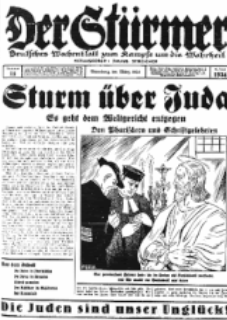
| Copy of Der Stürmer attacking Jews 1934 |
| Courtesy of Wikipedia Commons |
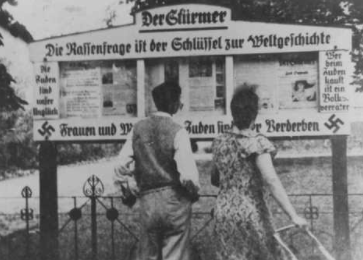
| German citizens read public radical newspapers, 1935 |
| Courtesy of Wikipedia Commons |
____________________________
"Think of the press as a great keyboard on which the government can play."
- Joseph Goebbels
__________________________________________________________________________________________________________
POSTERS
____________________________
The Nazis effectively used posters to spread their ideology throughout WWII. Most posters illustrated Nazi ideology while others encouraged enlistment. These public postings were especially effective because their message reached a larger assortment of people, specifically illiterate Germans and young children, something that propaganda such as newspapers and books couldn't do.
__________________________________________________________________________________________________________
BOOKS
The Nazis published novels detailing Nazi beliefs, most famously Mein Kampf, and burned any books that didn't align with Nazi ideology. These book burnings were broadcasted live on the radio, where you could hear Germans yelling ideological proclamations as books were thrown into the flames.
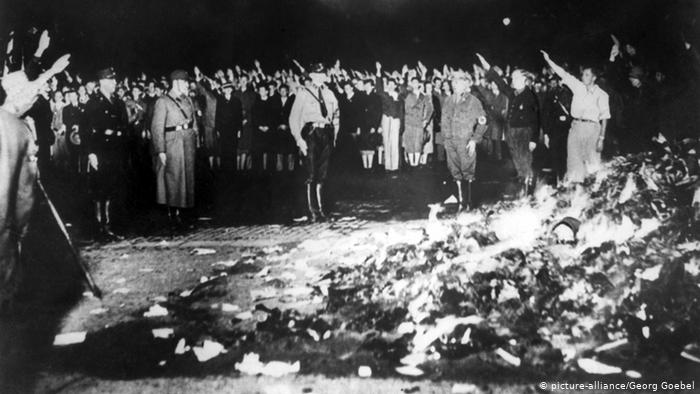
| Mass book burning.|
| Courtesy of Wikipedia Commons |
__________________________________________________________________________________________________________
FILMS
The Nazis also turned to a new and developing industry: cinema. Over 1,000 films were produced throughout WWII, all communicating that Germans must protect their homeland from foreigners. In the Nazi film "Jed Suss", Jewish characters are malevolent, deceitful, and conniving. Several other films established the German duty to defend and serve for the benefit of their homeland. At the end of one such film, "Triumph of the Will," Hitler orates a speech about ridding Germany of "undesirable elements" and swearing to the slogan "I will fight" to gain more supporters of the ideology, purify Germany, and mobilize Germans. These visual representations dehumanized foreigners and quickly diffused German ideas throughout the masses, further cementing Nazi support in Germany.
____________________________
____________________________
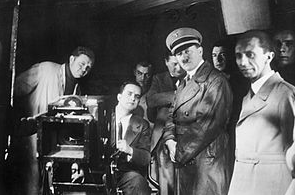
| Goebbels and Hitler watch filming, 1935. |
| Courtesy of Wikipedia Commons |
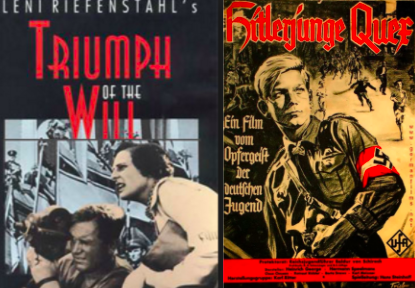
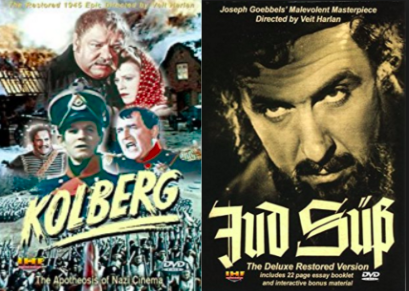
| Nazi films |
| Courtesy of SteemIt.com |
____________________________
The Nazi party also produced films that manipulated German war death tolls and casualties. Films depicted scenes of glorious achievements of the German soldiers, lacking imagery of dead or wounded Germans.
__________________________________________________________________________________________________________
ART WORK
The Nazis confiscated and banned an estimated 21,000 art pieces from museums and assembled them to form the “Degenerate Art” exhibition which went on tour, attracting over 2 million visitors. The intent was to reinforce, communicate, and provoke national disgust for foreign pieces and sources of artwork.
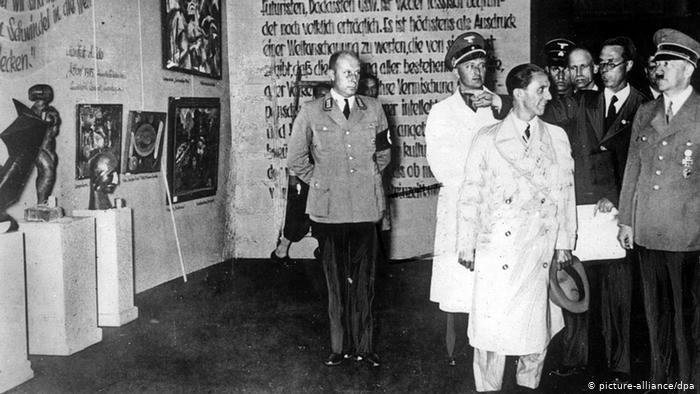
| Goebbels and Hitler at original Degenerate Art Exhibition, 1937 |
| Courtesy of dpa.com |
__________________________________________________________________________________________________________
__________________________________________________________________________________________________________
| Ella Forkin and Joey Politi |
| Senior Group Website |
| Student Composed Words: 1199 |
| Process Paper Word Count: 498 |
| Multimedia Time: 2:56 |
